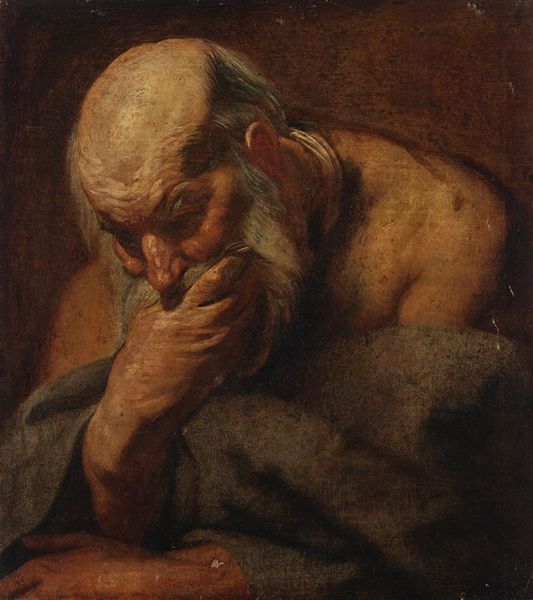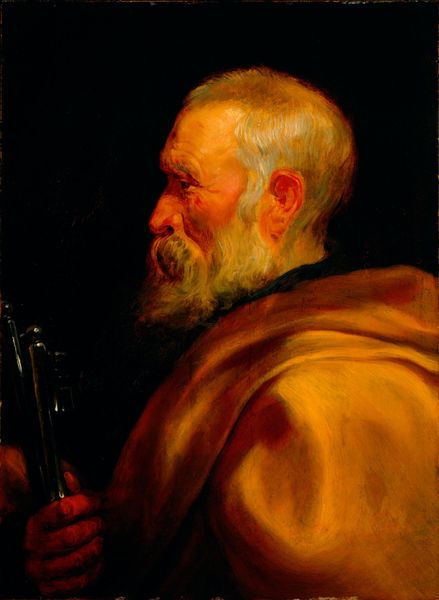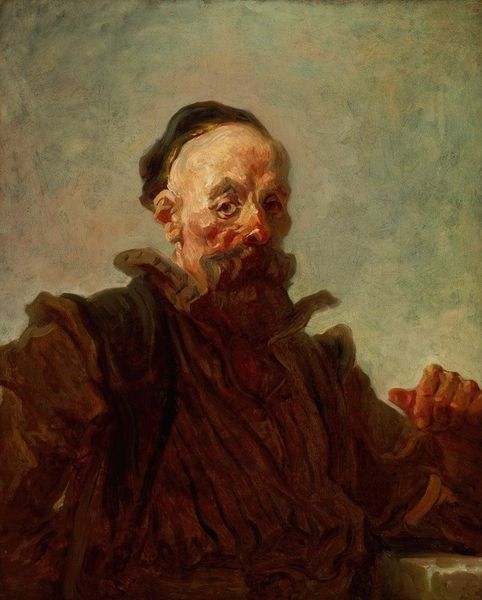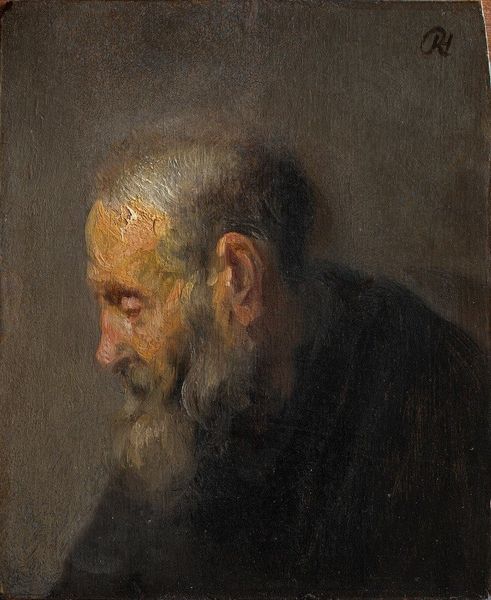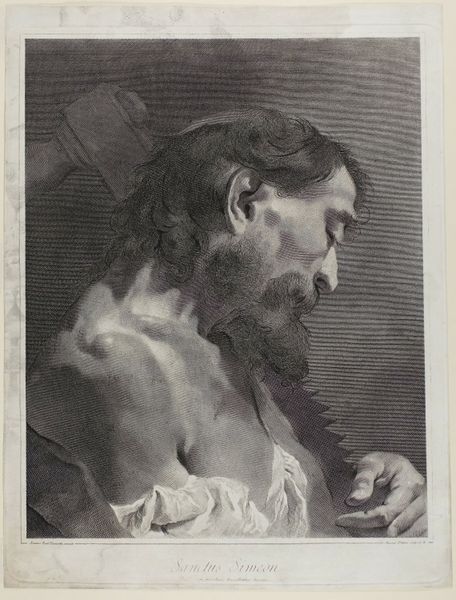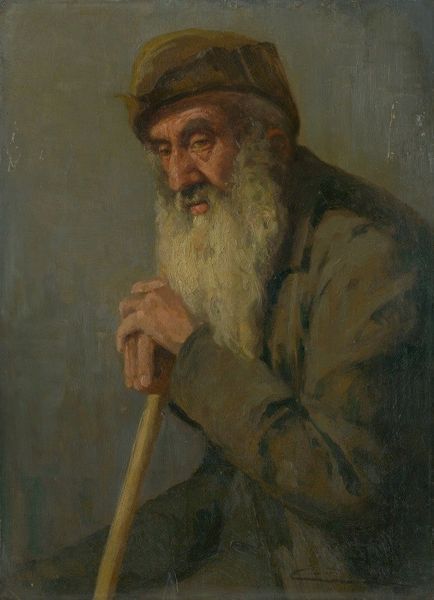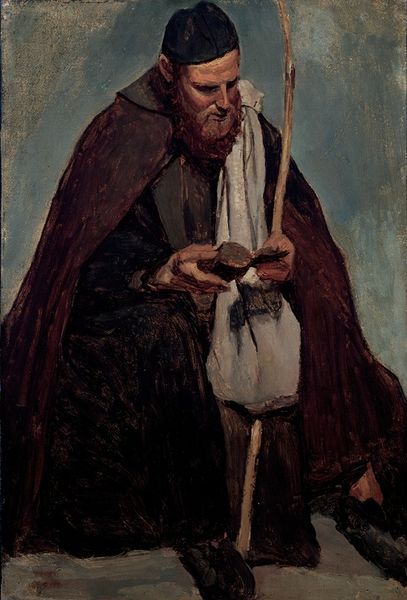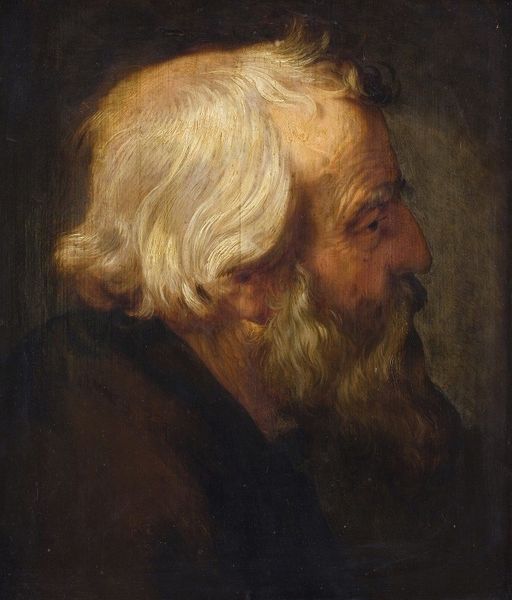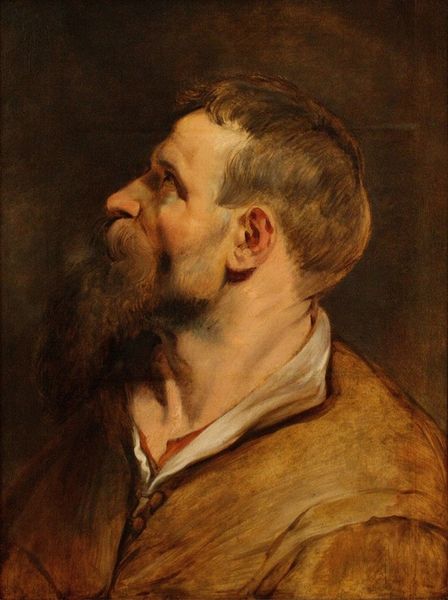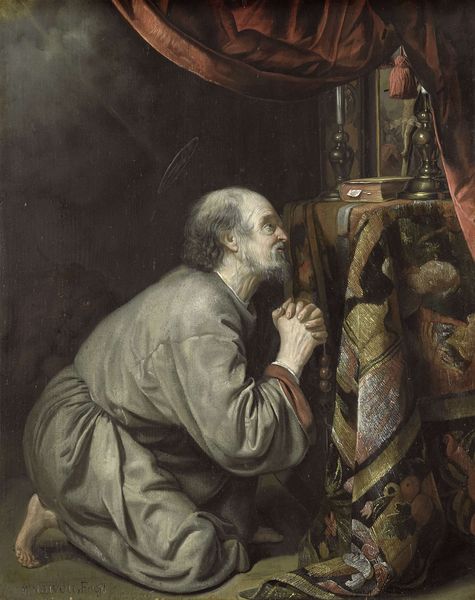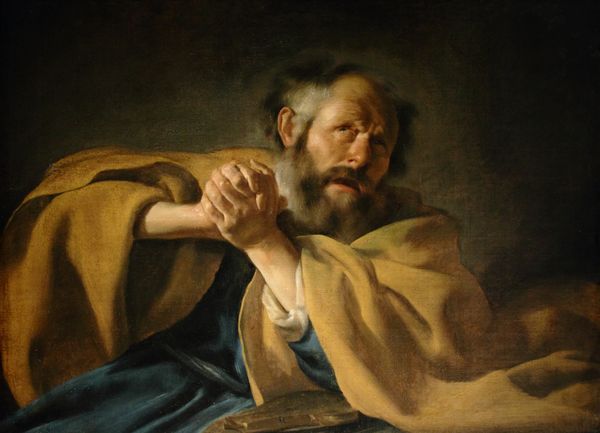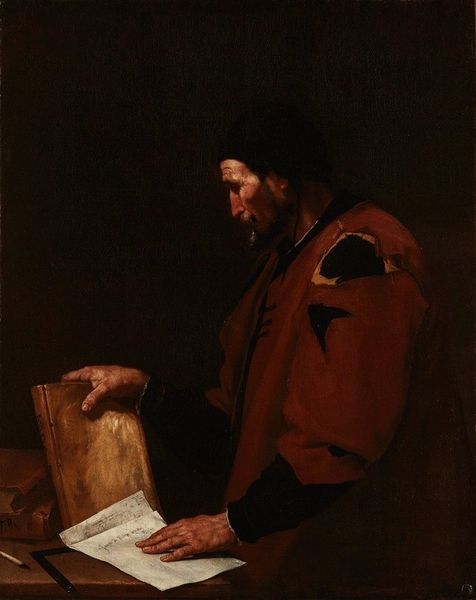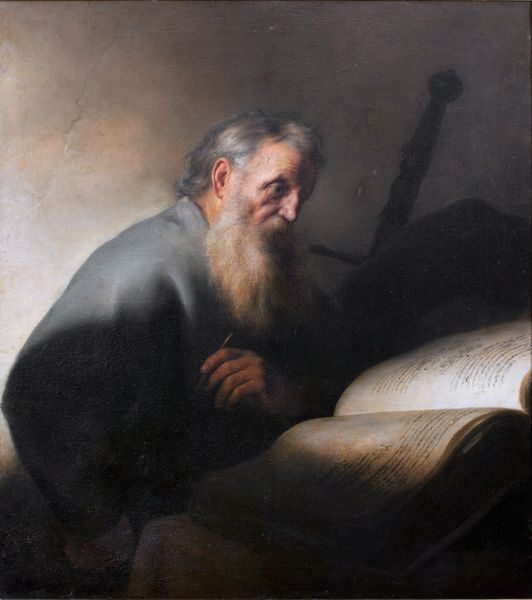
oil-paint
#
portrait
#
baroque
#
oil-paint
#
history-painting
Copyright: Public Domain: Artvee
Curator: Oh, he looks weary, doesn't he? Stoic, too. Like he's seen a thing or two and accepted it. Editor: Indeed. Here we have "St. Andrew," rendered in oil, brought to life by the masterful Jacob Jordaens. A stunning portrait, I think. Curator: It's more than stunning; it's heavy. The wood looks almost too big for him. Is that the cross he's to be crucified on? You know, I’ve always wondered what it feels like to carry your own demise. Editor: Precisely. Jordaens, part of the Flemish Baroque movement, really excels in imbuing this religious scene with raw humanity, making Andrew relatable beyond his saintly status. It shifts the focus, doesn't it? It's not just about divine narrative; it becomes about burden, endurance, and the politics of faith during his time, as Catholicism contended with Protestantism. Curator: Right! You can almost smell the wood and sweat. The light is interesting, too, the way it almost caresses his neck and the cross. He's carrying his own future. Dark, isn’t it? But that’s also a metaphor for existence in general: our future is often just there in our hands. Editor: Yes, and the institutional support for art at that time greatly influenced not just *what* was painted but *how* it was painted, right? Commissions by the church, for instance, helped solidify that aesthetic. These weren't solitary expressions alone; they had socio-political impetus, you know? To depict something to instill, encourage faith among a specific public in Antwerp and Flanders and elsewhere. Curator: The muted palette seems so appropriate. Nothing shiny or grandiose; just honest effort and plain acceptance. If he knows he’s heading to his end, then carrying that beam becomes a conscious decision, right? So simple but filled with a depth that’s truly timeless. Editor: Absolutely. Jordaens presents us not with a distant saint but a figure mired in the complex realities of existence and making a statement about public commitment. It challenges the viewers of that day, in Antwerp and now. What part would you play? How will you be remembered for the stances you embraced? It moves us beyond purely aesthetic appreciation to think about the political impact on and relevance of his output in a global view, no? Curator: I get a feeling I won’t quickly forget that man, and his cross. The humanity of this scene makes everything real and visceral. Editor: Nor I, in his ability to synthesize artistic excellence with deep ideological questioning. Food for thought!
Comments
No comments
Be the first to comment and join the conversation on the ultimate creative platform.
